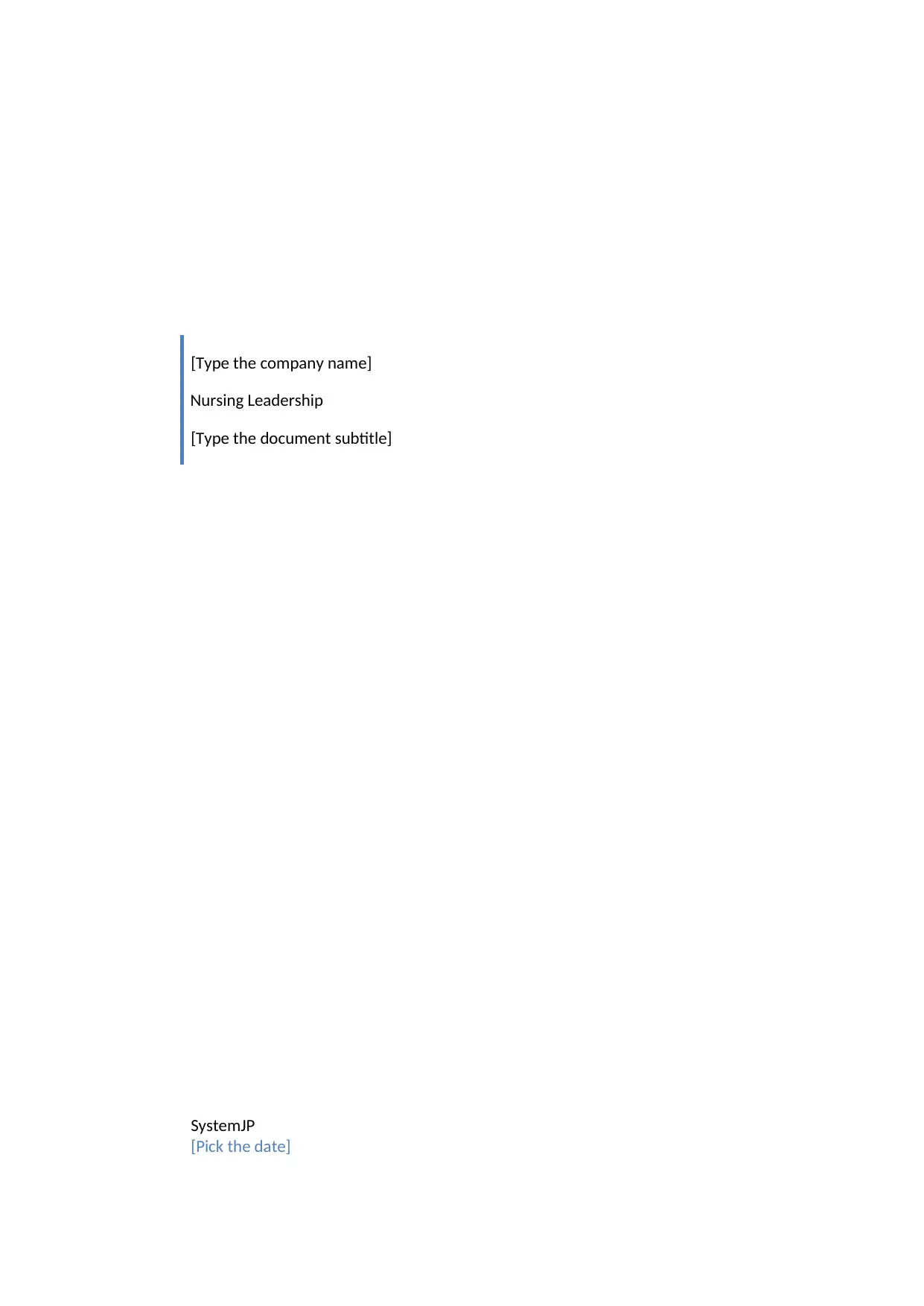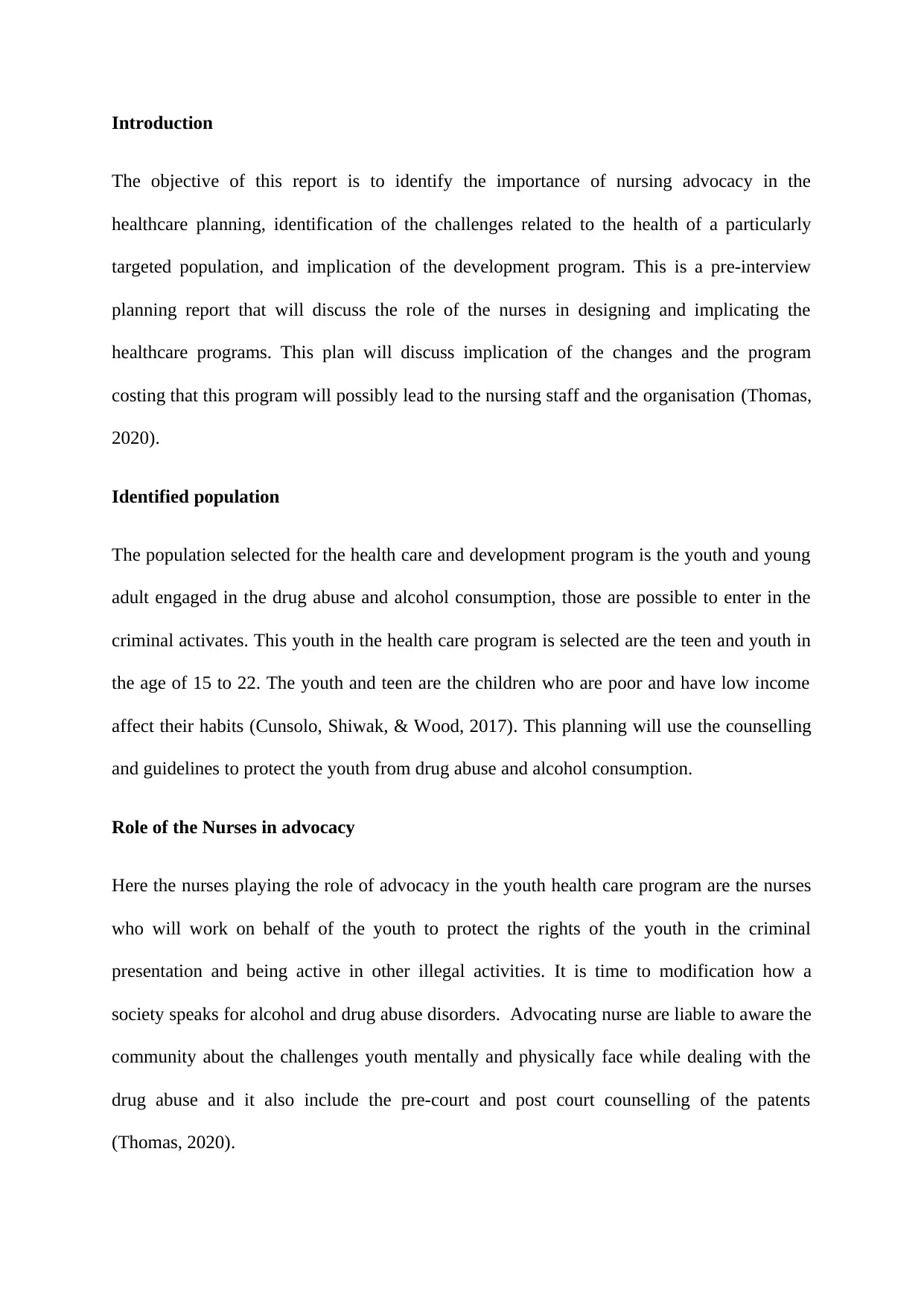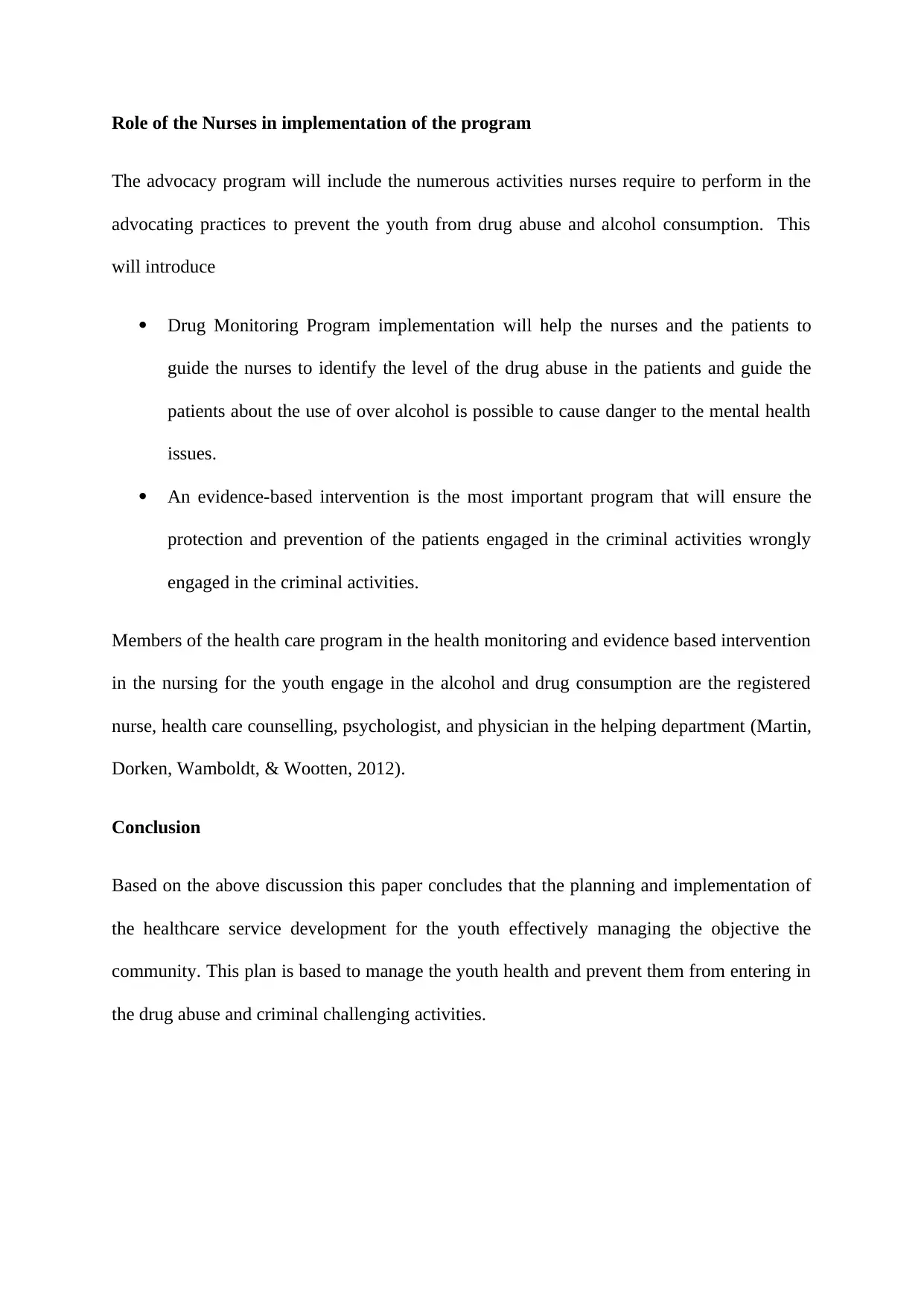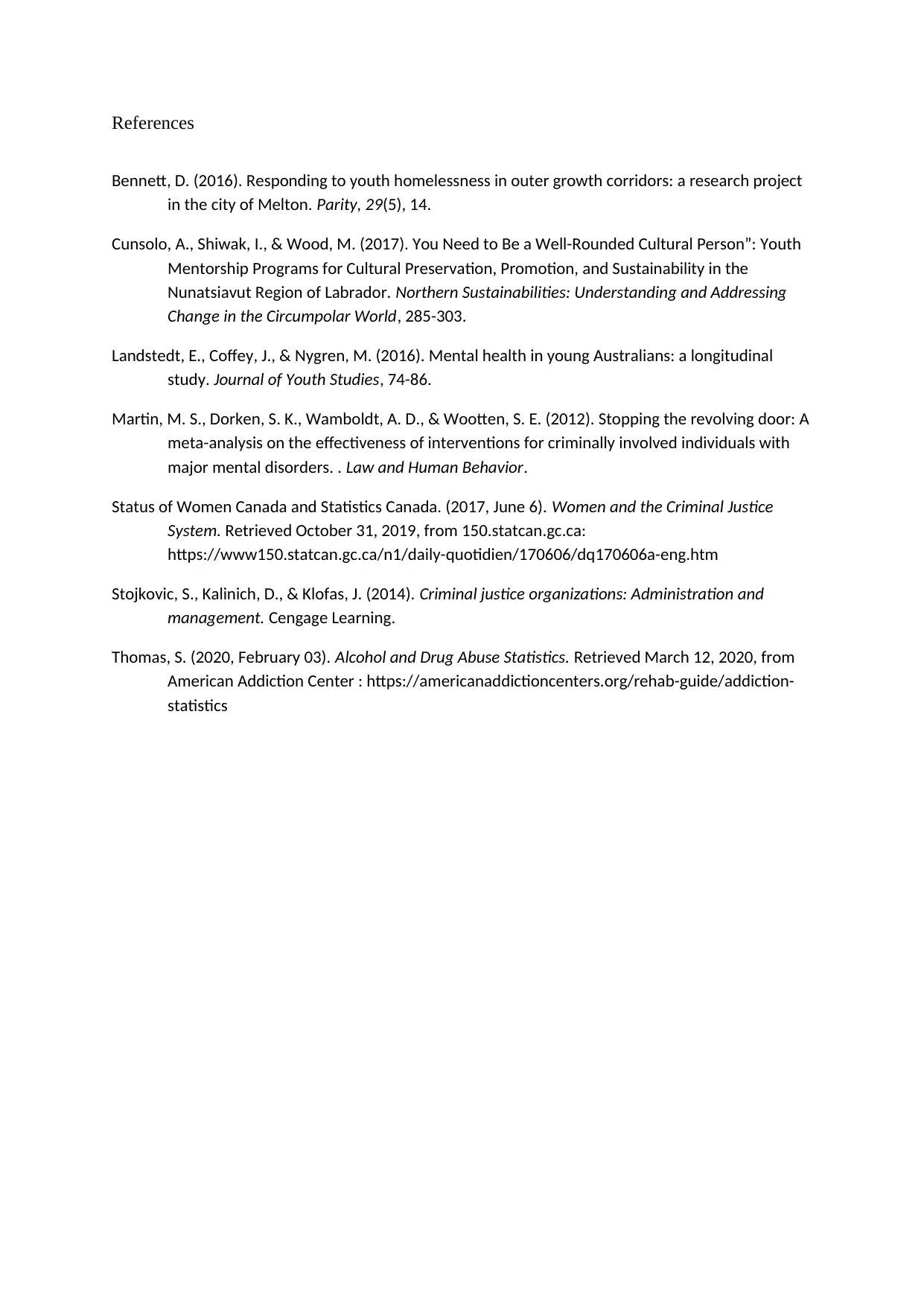SystemJP Nursing Leadership Report: Youth Healthcare Advocacy Program
VerifiedAdded on 2022/09/24
|4
|820
|21
Report
AI Summary
This report focuses on the importance of nursing advocacy in healthcare planning, specifically addressing the challenges faced by youth and young adults struggling with drug abuse and alcohol consumption. The selected population for the healthcare development program includes youths aged 15 to 22, with a focus on those at risk of entering criminal activities. The report highlights the crucial role of nurses as advocates, working to protect the rights of these youths and raise community awareness about the associated mental and physical challenges. It outlines the nurses' involvement in program implementation, including drug monitoring and evidence-based interventions. The healthcare program involves registered nurses, counselors, psychologists, and physicians. The report concludes that the effective planning and implementation of healthcare services can manage youth health and prevent them from engaging in drug abuse and criminal activities.
1 out of 4











![[object Object]](/_next/static/media/star-bottom.7253800d.svg)